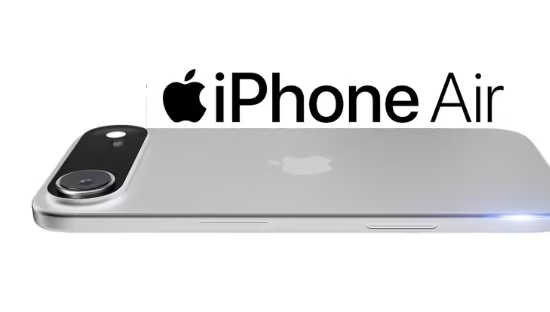
Saudi Travelers Drive eSIM Adoption as SIM Cards Fade
Saudi travelers are rewriting the rules of global connectivity. As international travel from the Kingdom soars post-pandemic, a growing number of Saudis are choosing eSIM technology over traditional SIM cards — and not just for convenience. Flexibility, reliability, and cost-effectiveness are becoming key drivers of this digital shift.
A new survey from Airalo, the world’s largest eSIM marketplace, highlights just how fast this transition is happening. Nearly three-fourths of travelers believe physical SIMs will soon be obsolete, while 70% already own eSIM-capable devices. For a country like Saudi Arabia — young, tech-forward, and increasingly mobile — the findings reflect not just a trend, but a cultural and technological pivot.
The pain points of physical SIM cards
Anyone who has landed in a foreign airport knows the ritual: find the kiosk, compare local SIM offers, wait in line, hand over your passport, and finally wrestle with activation. For many Saudi travelers, this is becoming an outdated and frustrating experience.
According to the survey, more than half of Saudi respondents reported challenges in buying local SIMs abroad, with some spending up to two hours trying to get connected. That’s wasted time in transit lounges or at convenience stores when most travelers would rather be working, resting, or exploring.
Business travelers described the difference as transformative. Instead of juggling SIM trays or keeping a stash of plastic cards from every country, eSIMs allow them to land, switch on, and connect instantly. For frequent flyers in Riyadh or Jeddah who hop across multiple time zones each month, this is no longer a luxury — it’s a necessity.
Why Saudis are embracing eSIM faster than others
Ahmed Elfiky, Regional Director at Airalo, points to a unique Saudi advantage:
“Saudi travelers are among the most enthusiastic adopters of eSIMs in the region, driven by their frequent travel and the convenience, reliability, and cost-effectiveness that eSIMs provide. With the Kingdom’s young, tech-savvy population and its role as a hub for both business and leisure travel, eSIM adoption is accelerating rapidly.”
Saudi Arabia’s demographics speak volumes. Over 63% of the population is under 35, according to official statistics, and smartphone penetration is among the highest in the world. Combine this with the Kingdom’s role as both a business hub and a religious tourism destination, and the demand for seamless global connectivity becomes obvious.
Reliability matters more than ever
It’s not just about convenience. Connectivity reliability is a major factor. Almost half of Saudi business travelers reported poor WiFi quality abroad, often leading to lost productivity during crucial meetings or trips. Relying solely on hotel WiFi or café hotspots is increasingly risky.
Here’s where eSIMs come in:
- Global coverage across hundreds of destinations.
- Flexible data plans, from short-stay bundles to monthly passes.
- Instant activation, avoiding downtime.
This ability to carry multiple profiles in one device — and switch between them in seconds — means travelers don’t have to gamble on unreliable hotel or airport WiFi.
Strong awareness, stronger readiness
The Airalo survey also shows that 65.3% of Saudi participants are already familiar with eSIM technology. This is higher than global averages reported in GSMA’s Mobile Economy research, where consumer awareness still lags in many regions.
Such readiness positions Saudi Arabia as one of the fastest-moving markets in terms of adoption. And it’s not happening in a vacuum: the Kingdom’s Vision 2030 digital transformation strategy has made connectivity a national priority. From smart cities like NEOM to digital government services, the Saudi push towards seamless tech integration is evident across sectors.
How Saudi trends compare globally
Saudi Arabia isn’t the only country turning toward eSIMs, but the pace is noteworthy. Let’s look at the bigger picture:
- Europe: Countries like France, Germany, and the UK are seeing strong adoption, particularly among business travelers. Orange, Vodafone, and Deutsche Telekom have all introduced robust eSIM plans.
- Asia-Pacific: Markets such as Japan and South Korea were early adopters, with operators aggressively pushing eSIM support for domestic and outbound travelers.
- United States: Apple’s decision to launch the iPhone 14 as eSIM-only in the U.S. has set a precedent, forcing carriers and consumers alike to adapt.
Compared with these markets, Saudi Arabia stands out because adoption is being driven as much by international travel behavior as by telecom operator offerings. The Kingdom’s travelers are global by necessity — whether for Hajj and Umrah, business expansion, or leisure. That accelerates the demand curve far more than in markets where international travel is less frequent.
The competitive landscape: Airalo and beyond
While Airalo is often cited as the world’s leading eSIM marketplace, it isn’t alone in shaping this shift. Other major players include:
- Airhub – growing fast in the Middle East, offering competitive bundles with local partnerships.
- Nomad eSIM – targeting digital nomads with flexible, data-first plans.
- Bnesim – positioning itself as a “lifetime number” provider with add-on travel services.
- GigSky, Ubigi and Holafly – long-established names with enterprise connectivity solutions.
What makes Airalo’s Saudi findings compelling is that they validate what the industry has been sensing for years: the Kingdom is not just adopting eSIMs, it’s helping set the standard for regional digital travel behavior.
What this means for travelers and the market
For travelers, the message is clear: eSIMs are becoming the default. Within a few years, the physical SIM may be a niche product — a backup option rather than the mainstay. With Apple, Samsung, and Google all making eSIM support standard on flagship devices, the hardware ecosystem is aligned.
For telecom operators, the transition is trickier. Traditional revenue from roaming charges and physical SIM sales is under pressure. Many MENA operators are cautiously embracing eSIM, but often with pricing models that don’t yet match the flexibility of independent marketplaces like Airalo or Airhub.
This creates a window of opportunity. Third-party providers can capture market share by offering what operators don’t: simple, transparent, multi-country connectivity tailored for today’s traveler.
Conclusion: Saudi Arabia as a case study in global eSIM adoption
Saudi Arabia’s embrace of eSIM technology is more than just a consumer preference — it’s a case study in how travel behavior, demographics, and national digital strategy can combine to accelerate adoption.
Where European operators push eSIMs through infrastructure, and U.S. adoption was catalyzed by Apple’s bold hardware move, Saudi Arabia is different. Here, it’s the traveler — young, mobile, tech-savvy, and globally active — who is driving the shift.
If Airalo’s data holds true, physical SIM cards are on borrowed time in the Kingdom. And given Saudi Arabia’s influence in the Middle East and its ambitious Vision 2030 agenda, what happens here could soon ripple across the region.
For travelers, the future looks simpler: land anywhere, connect instantly, no kiosks, no plastic. For the industry, it’s a challenge — and an opportunity — to keep up with one of the fastest-moving connectivity markets in the world.











